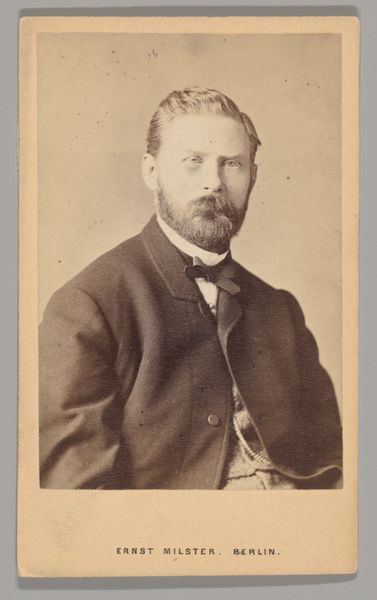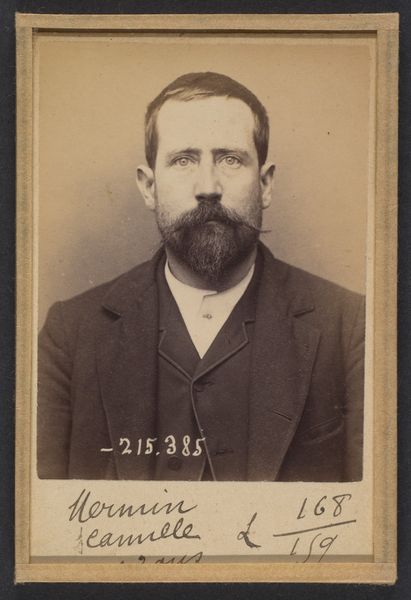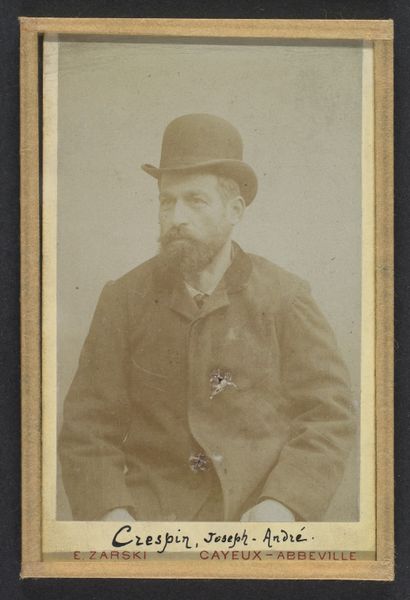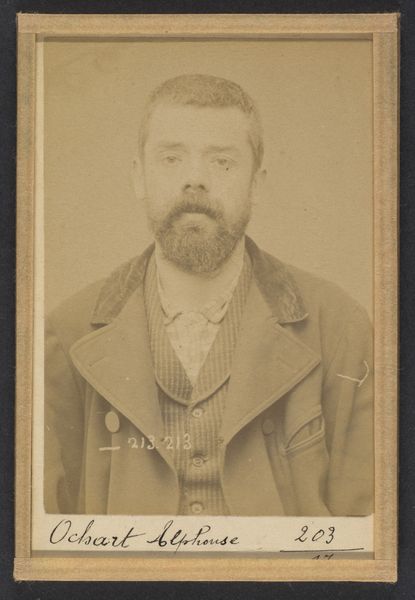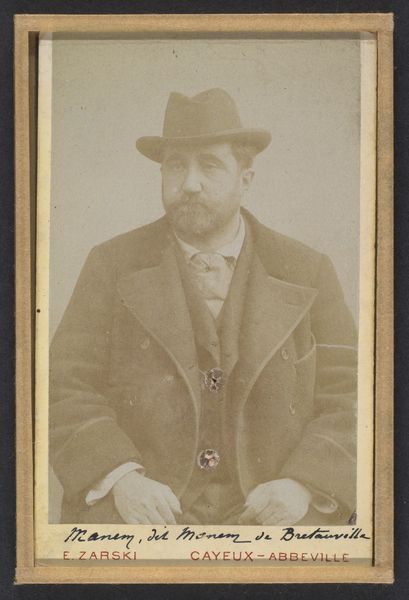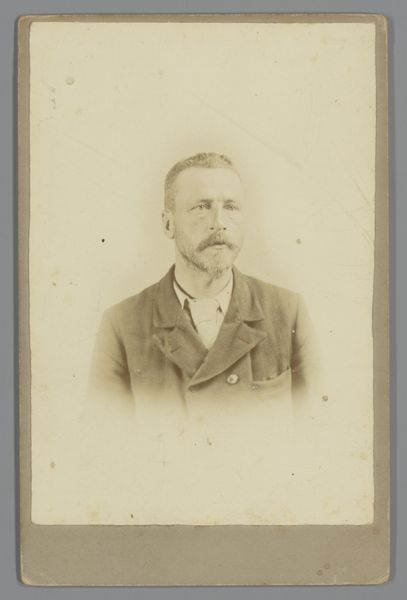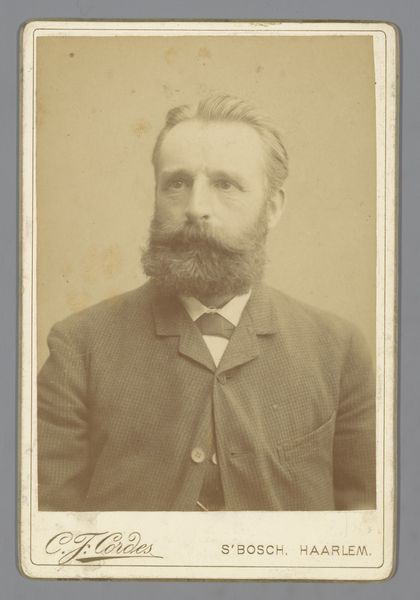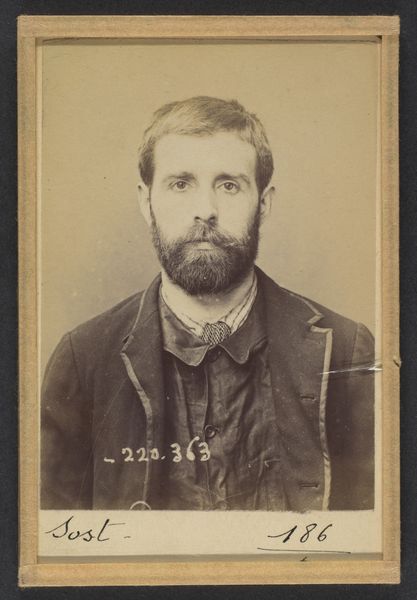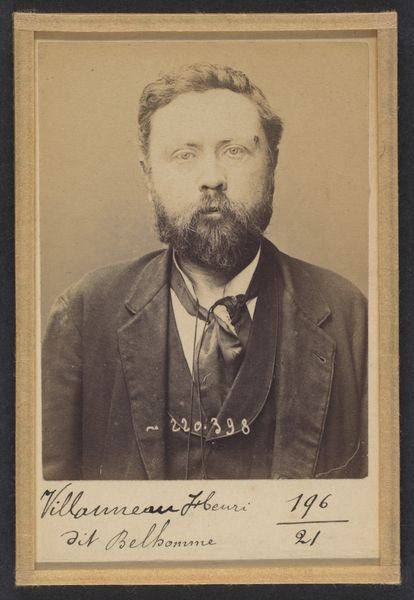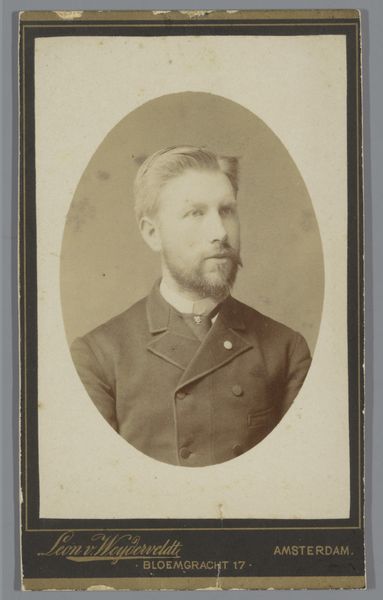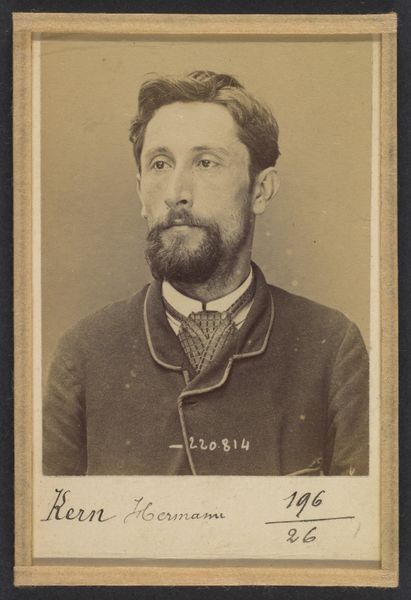
Crespin. Joseph. 40 ans, né à Roquesteron (Alpes-Maritimes). Employé de banque. 25/3/93. 1893
0:00
0:00
daguerreotype, photography, gelatin-silver-print
#
portrait
#
daguerreotype
#
photography
#
gelatin-silver-print
#
realism
Dimensions: 10.5 x 7 x 0.5 cm (4 1/8 x 2 3/4 x 3/16 in.) each
Copyright: Public Domain
Curator: Before us we have an albumen silver print created in 1893 by Alphonse Bertillon. This piece, titled "Crespin. Joseph. 40 ans, né à Roquesteron (Alpes-Maritimes). Employé de banque. 25/3/93." resides here at the Metropolitan Museum of Art. Editor: There’s an unsettling stillness to it. It’s more than just the sepia tones of the gelatin silver print—the subject's intense gaze is almost accusatory, magnified by the fact it has aged and spotted across the emulsion over time. Curator: It's compelling how the constraints of early photographic technology directly affect the final aesthetic. We can read that through the composition, note how he seems confined by this box. Editor: Confinement is an interesting concept here, given Bertillon’s involvement in the criminal justice system. It makes you wonder if there’s something almost adversarial between subject and photographer, if this man, listed as a bank employee, has in some way been accused. Curator: We see photographic technologies that are meant to bring clarity instead are tied into themes of surveillance. Notice the direct and unwavering gaze, devoid of artifice. Its power comes from its simplicity. Editor: Absolutely. But this ‘simplicity’ masks the inherent power imbalance present. A white male gaze literally freezes the identity of this ‘Crespin’, marking him both through naming, age, profession and date – he's a case study already and not yet known to the viewer. Curator: Indeed. Bertillon pioneered anthropometry— a system intended to codify and categorize human difference, leading to racial bias and ableist thinking, all through measurement. And you do find those systems explicitly in how Crespin has been presented through a formal, nearly bureaucratic practice of cataloging. Editor: Precisely. Thinking of Barthes, there's this studium, the reality depicted—that Crespin existed, worked at a bank. And the punctum? It is Bertillon's system, embedding itself as the author of someone's documented fate through categorization. This is a study on photographic and bureaucratic objectification as much as a document of Crespin himself. Curator: Yes. We could study this photographic approach from different angles ad infinitum and still perhaps never reconcile these two ideas that seemingly conflict in purpose yet exist together. Editor: And those points of rupture is what I believe is truly thought provoking about this portrait and allows us to learn and grow from revisiting such a compelling yet discomforting artwork.
Comments
No comments
Be the first to comment and join the conversation on the ultimate creative platform.
